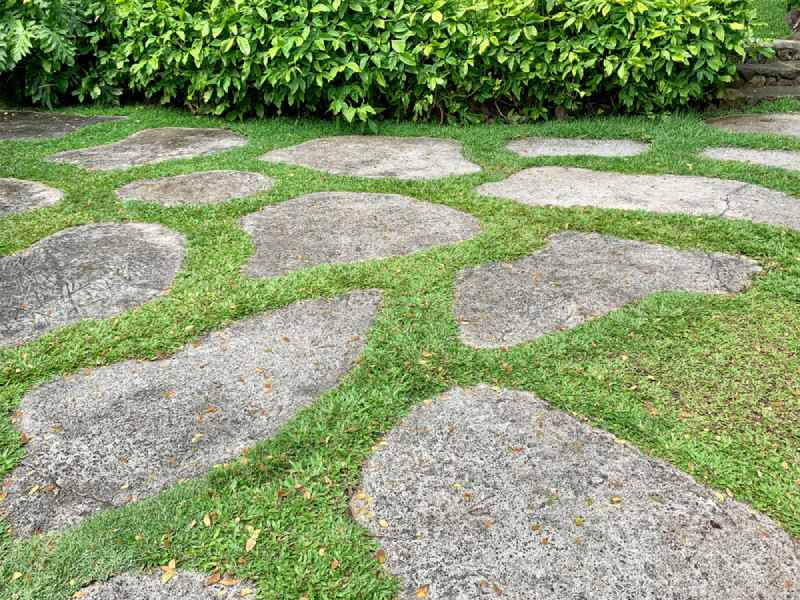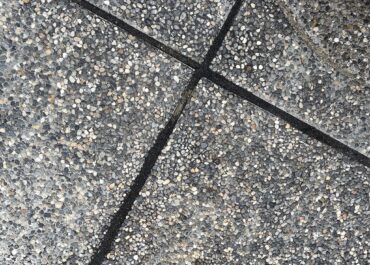
So you want to learn how to lay pavers on grass. First of all, you must know that laying pavers directly on the soil isn’t as common in professional hardscape design compared to other methods, like laying them on a prepared base or substrate. However, it’s not unheard of – and there are situations where a DIY approach might not be such a bad idea.
See, in professional hardscape design, the emphasis is typically on creating a stable, long-lasting surface. This often involves excavation, preparing a sturdy base with compacted gravel or sand, and then laying the pavers on this foundation. This method ensures better stability, durability, and resistance to shifting or settling over time, which becomes quite tricky when grass is involved.
By any means, in this article, you’ll learn how to lay pavers on grass and all the basic details behind this ambitious project before tackling it. Keep reading to find out!
Also, don’t miss: Do pavers fade in the sun? How to keep them bright and glossy
What you should know beforehand
In the vast majority of cases, laying pavers on grass might be considered for certain temporary or less formal settings, like in temporary event spaces or smaller DIY projects where a more casual, quick-fix approach is acceptable. It might also be employed in situations where minimal disturbance to the existing landscape is desired or where the installation is intended to be temporary.
However, as mentioned before, in professional landscaping and hardscape design projects, laying pavers on grass is less common due to:
- concerns about long-term stability;
- potential issues with grass growth between pavers;
- and unevenness caused by the natural growth and movement of the underlying grass.
While it’s possible to lay pavers on grass with proper preparation, most people prefer more conventional methods that involve a well-prepared base to ensure the integrity and longevity of the paved area. Alternatively, even a concrete patio can be used to settle pavers instead of a grassy field – click here to read our full tutorial on the subject.
Why would you lay pavers on grass?
Ultimately, the decision to lay pavers on grass depends on your individual preferences, budget limitations, functional needs, and the desired aesthetics of the outdoor space. In the end, it does offer a way to transform and utilize a grassy area in a different, more structured manner.

There are several reasons why one might choose to lay pavers on grass, such as:
- Aesthetic enhancement: Any kind of paver can enhance the visual appeal of outdoor spaces, offering a defined area for pathways, patios, or seating areas, and adding structure and beauty to a garden or yard.
- Functionality: Creating a stable surface with pavers allows for better functionality in areas where grass might not be suitable, such as high-traffic zones or places where maintaining grass is challenging.
- Versatility: Pavers provide versatility in every way possible – they can be laid in various patterns and styles, allowing for creative expression and customization of your home.
- Reduced maintenance: Given how grass requires regular maintenance like mowing, watering, and weed control, pavers can reduce the need for ongoing lawn care, offering a low-maintenance alternative.
- Preventing erosion: In areas prone to soil erosion, laying pavers can stabilize the ground, preventing the grass and soil from washing away during heavy rains.
- Temporary use: Sometimes, pavers on grass might serve a temporary purpose for events or gatherings, providing a stable surface that can be removed after use without damaging the grass underneath.
How to lay pavers on grass
While laying pavers on grass is possible, it’s essential to follow the steps we’ll give you meticulously to ensure the stability and durability of the surface. If you’re uncertain about any step, seeking advice from a professional team could be very beneficial. While it’s possible to lay pavers on grass, it requires some preparation. Check out below:
- Ensure proper drainage to prevent water from pooling under the pavers. This might involve slight grading or adding drainage channels.
- Lay a landscaping fabric beneath the base layer to prevent weeds and moss from growing through the pavers.
Prepare the Area
- Clear the area where you plan to lay the pavers. Remove any grass, debris, or rocks.
- Use a shovel to dig down a few inches to create a level surface. This helps accommodate the paver’s thickness and a base layer.
Add a Base Layer
- Lay a base material like crushed gravel or sand evenly across the excavated area. This base layer should be compacted to create a stable foundation for the pavers.
Install Edging
- Install edging material, such as plastic or metal landscape edging, to define the border of the area and keep the pavers in place.
Place Pavers
- Once the base layer is in place and compacted, start laying the pavers according to your desired pattern. Ensure they fit snugly together.
Fill the Gaps
- Fill the gaps between the pavers with sand or gravel to lock them in place and provide stability.
Compact and Level
- Use a compactor to press the pavers into the base material and ensure they are level. This step is crucial for stability.
Maintain
- After installation, regular maintenance is essential. Trim the grass around the pavers and periodically check for any adjustments needed due to settling or shifting.
The importance of a well-done installation
The installation of paving stones holds paramount importance due to its multifaceted impact on the longevity, stability, and safety of the paved surface. Ensuring proper installation techniques directly correlates with the durability of the structure, preventing issues like shifting, sinking, or unevenness that can compromise the integrity of the paved area. A well-laid surface not only endures various weather conditions and foot traffic but also minimizes the risk of tripping hazards, promoting safety for pedestrians, particularly in high-traffic zones.

Moreover, accurate installation methods contribute significantly to the visual appeal of the paved space. Attention to detail in alignment, spacing, and patterns results in an aesthetically pleasing finish that enhances the overall look of the area. Beyond aesthetics, the functionality of the paved surface is reliant on correct installation practices. Whether it’s a driveway, patio, or pathway, properly installed pavers ensure that the surface serves its intended purpose effectively.
Addressing installation intricacies such as base preparation, edge restraints, and finishing touches is crucial to prevent common issues that may arise over time. By employing proper techniques, potential problems like weed growth between pavers or surface irregularities can be mitigated, leading to long-term cost savings. Ultimately, investing time and effort in the precise installation of paving stones not only secures the immediate integrity of the surface but also minimizes the need for future repairs or replacements – making it a prudent long-term investment.
Read as well: Are there stepping stones that don’t get hot?
Get high-quality pavers and an installation team with us!
As a branch of Eagle Stones, our team specializes in paver supply and installation around the county of Sarasota and Manatee, Florida. In case you’re near us, don’t hesitate to give us a call so we can get started on your project with a free estimate!
Click here to view the full online catalog – we’ll be waiting for you to reach out and get the perfect colored pavers you’ve been longing for.




